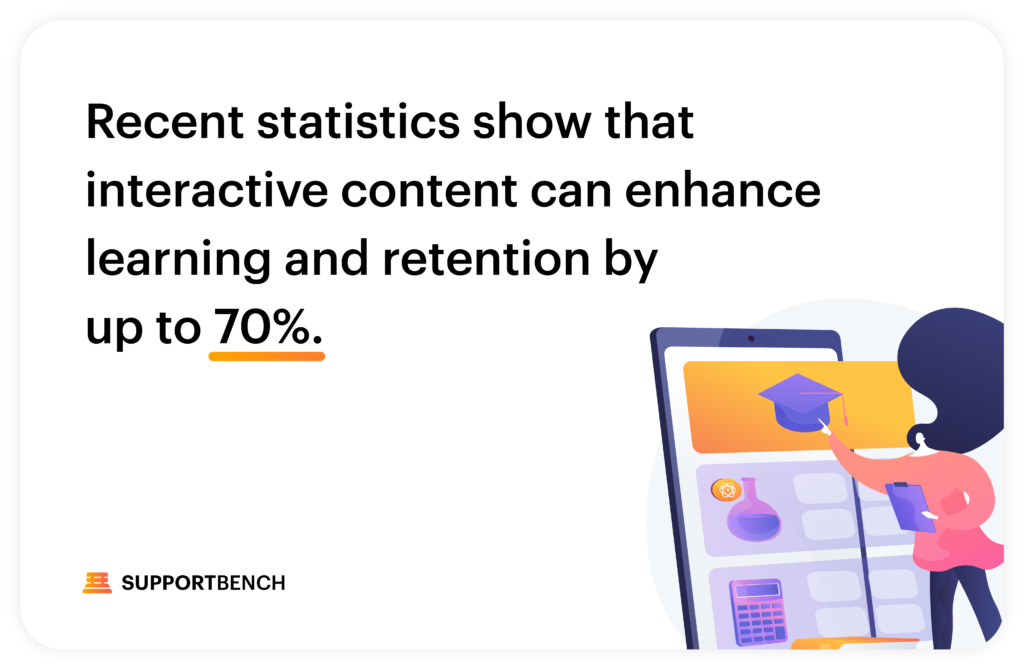In today’s rapidly evolving support landscape, a Knowledge-Centered Service (KCS) knowledge base is no longer a luxury—it’s a necessity. Having a well-organized, accurate, and easily accessible knowledge base can significantly enhance the efficiency and effectiveness of your customer support operations. Below are nine groundbreaking tips to maximize the potential of your KCS knowledge base.

1. Personalized Content Recommendations
With the rise of AI and machine learning, it’s now possible to offer tailored content suggestions based on user behaviors and past interactions. By analyzing a customer’s search patterns and ticket history, your KCS system can suggest the most relevant articles, leading to faster resolution. And, the more relevant your knowledge base suggestions are, the quicker users can find answers. With advanced AI algorithms, content recommendations can be dynamically adjusted to reflect a user’s unique history and preferences.
Most definitely, a personalized experience reduces customer frustration, ensuring that they find the right information quickly. This not only boosts efficiency but also enhances user satisfaction, leading to increased loyalty. You can do this by using behavioral data to identify common user pathways. Segment your audience based on past interactions and adjust content recommendations accordingly.
With Supportbench’s advanced AI capabilities, including sentiment analysis and intent detection, you can fine-tune content recommendations for each customer, offering a personalized experience that is both intuitive and user friendly.
2. Continuous Content Auditing
As Helen Keller so wisely said, “Alone we can do so little; together we can do so much.” Collaborative auditing involves routinely reviewing and refining your KCS articles with your whole team. It’s important to encourage team members to give feedback and suggest edits to ensure content remains up-to-date and relevant.
This is so significant because, with the tech landscape in constant flux, outdated information can mislead users. This obsolete or incorrect information can damage your company’s reputation and trustworthiness. However, regularly revisiting and revising your content ensures accuracy and reliability. Keeping your content updated ensures that users always have the latest, most accurate information.
You can easily implement a quarterly review of the top 50 most-accessed articles. Seek input from different team members, ensuring multiple perspectives are considered. Establish a review cycle for all articles and continuously encourage team collaboration during this process. Pooling diverse expertise for comprehensive content refinement can only help you!
3. Layered Content for Different Audiences
Not all users are created equal. Some prefer a quick fix, while others need in-depth explanations. By segmenting or creating layered content—from brief solutions to comprehensive walkthroughs—you cater to diverse user needs. Users with varying levels of expertise and inquiry depth.
After all, a one-size-fits-all approach can either overwhelm or under-inform users. But, layered content ensures that each user finds information tailored to their specific needs.
Simply segment your articles into ‘Quick Solutions’, ‘Standard Walkthroughs’, and ‘Deep Dives’. You can also segment articles based on complexity. But always ensure a clear navigational pathway for users to explore deeper content if they wish. Use Supportbench’s customizable dashboards to monitor which type of content is accessed the most, refining your strategy further.
4. Interactive Content Formats
Recent statistics show that interactive content can enhance learning and retention by up to 70%. Engaging, interactive formats like videos, flowcharts, and infographics can simplify complex topics, making them more accessible and memorable for users. We now know that these visual aids can expedite comprehension, especially for complex procedures or abstract concepts. They have been repetitively shown to boost user engagement, as many users prefer visual content over text.
Simply identify the most intricate topics in your KCS. You can even start by identifying the top five complex issues users face. Create videos or infographics for these issues, enhancing clarity and user engagement. It will certainly help to collaborate with visual designers to transform these into engaging, interactive content pieces.
5. Feedback Loop Integration
Bill Gates once remarked, “We all need people who will give us feedback. That’s how we improve.”
Constructive feedback can be a goldmine for continuous improvement. Inviting users to share their feedback ensures that your KCS evolves in line with user needs. It is this direct user feedback that highlights real-world challenges, offering insights into areas of potential refinement as users are able to point out inaccuracies or suggest improvements.
You can add feedback buttons or short surveys to every article. Better still, reward users for sharing their insights, fostering a culture of collaboration and improvement. Maybe even add a ‘Was this article helpful?’ button with options for users to submit detailed feedback. And then you can use these valuable insights to continually refine your content. When harnessed properly, using systems like Supportbench, the direct insights provided by user feedback can and does guide content strategy and development for many organizations.
6. Leverage User-Generated Content
In the enterprise domain, some of the best insights come from users themselves. It’s vital to encourage users to share their solutions, as this exponentially enhances the diversity, breadth, and depth of your KCS database. Some don’t realize that users often devise unique, efficient solutions; ones that we often miss. By integrating these into your KCS, you showcase your commitment to community collaboration and enrich your content pool.
An easy way to do this is to introduce forums or discussion boards. Perhaps something like a ‘Community Solutions’ section in your KCS. Encourage users to share their solutions and recognize top contributors through awards or badges. This will foster a sense of community and collaboration; precisely what you need!
7. Cross-link Relevant Articles
Hyperlinking related articles ensures users don’t have to return to the main database to search for additional information. It ensures a smooth, uninterrupted flow of information. This cross-linking with more of a seamless navigation, enables users to explore related topics without returning to the main search page. Anything we can do to enhance the user experience ensures that they spend less time searching and more time learning.
You can simply identify articles with thematic overlaps and introduce hyperlinks to guide users to related content. You might try conducting a bi-monthly cross-linking exercise. This will ensure that each article links to at least three related ones, offering a more in-depth and connected user experience. This Internal linking can even benefit SEO by spreading link equity across articles, potentially boosting rankings!
8. Gamify the Learning Process
Turning learning into a game can boost user engagement and retention. Gamification turns learning into an enjoyable challenge and it can motivate your users to explore more content, deepening their understanding and engagement with your platform.
By introducing elements like badges, you incentivize users to engage more deeply with your KCS. You could even introduce a point-based system, rewarding users for diverse engagements like reading articles, watching videos, or contributing to forums. Perhaps you could try a ‘Knowledge Explorer’ badge for users who access more than 50 articles in a month. This encourages KCS usage and fosters a sense of accomplishment and even loyalty.
Wrapping Up
As I’ve shown, your KCS isn’t just a static repository of information—it’s a dynamic, evolving tool that can significantly enhance user satisfaction and support efficiency. By incorporating these 8 groundbreaking strategies, not only do you streamline support but also position your support team as the true heroes of your organization.
Supportbench’s advanced features, especially its AI-driven capabilities, ensure that you’re not just keeping pace with the evolving demands of customer support but setting new standards of excellence. Embracing a proactive, data-driven approach to KCS management ensures that your support department isn’t just seen as a reactive team but as a valuable asset driving company growth and customer satisfaction. In the words of Steve Jobs, “Innovation distinguishes between a leader and a follower.” By leveraging the best of Supportbench, ensure your enterprise stays ahead, leading the way in unparalleled customer support.











